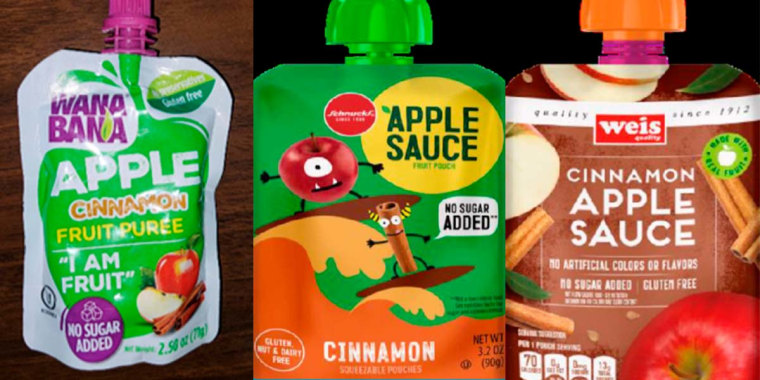WASHINGTON — More children were apparently sickened by apple puree pouches recently recalled due to dangerous lead contamination, the Food and Drug Administration said.
The agency has received 52 reports of elevated lead levels among children who reportedly consumed the products, which is up from 34 cases reported last week. The reports span 22 states and involve children between the ages of 1 to 4, according to the FDA’s online update on the investigation.
The pouches were marketed to parents and children under three brands: WanaBana apple cinnamon fruit puree and Schnucks and Weis cinnamon applesauce pouches. They were sold by national grocery chains, including Dollar Tree, and online retailers such as Amazon.
The FDA said it is still working with Dollar Tree to get the recalled products off of shelves in several states.
“This product should not be available for sale and consumers should not purchase or consume this product,” the agency said.
Parents should dispose of the pouches by emptying the contents into the trash and discarding the packaging, the agency said.
The FDA said Wednesday it is investigating the source of the contamination in cooperation with the Centers for Disease Control and Prevention. The agency previously said cinnamon imported from a manufacturer in Ecuador was the “likely source” of the lead contamination.
Lead exposure can lead to serious learning and behavior problems. Heavy metals like lead can get into food products from soil, air, water or industrial processes, according to the American Academy of Pediatrics.
There’s no safe level of lead exposure, but the CDC uses a marker of 3.5 micrograms per deciliter to identify children with higher levels than most. The affected children’s blood lead levels ranged from 4 to 29 micrograms per deciliter.
